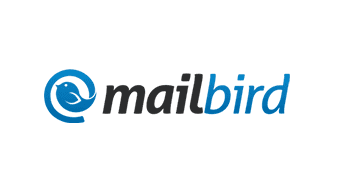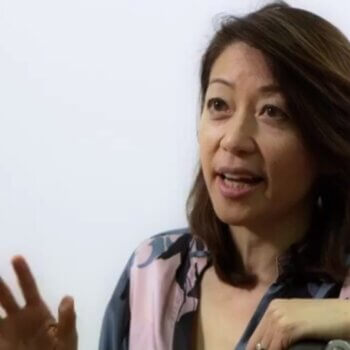Paul Graham famously said – “No product survives its first interaction with a user”. So it is invaluable that once you feel confident that you have identified a strong need through user research that you build a prototype and get it in front of users quickly.
The 1 week design sprint format was defined by the Google Ventures design team. The design sprint is great as it forces you to collaborate with others to generate lots of ideas, critique them, build something concrete and then get feedback from real users in an intense, short burst of time. Below we share some of our experiences running design sprints for 4 of our idea stage companies, EdgeRetreats, LiveBetterWith, The Gifting Coand Baby2Body.
Step 1: Preparation
Our design sprints typically include at least a founder, a designer/ux, someone technical, a marketer and a facilitator. We have found this to be ideal as it keeps the size of the group small while covering all the different disciplines. We also annoy everyone in our office by claiming a meeting room for a week so we can create our own little war room. With a combination of whiteboards, flipcharts, walls and tables, we can capture all our ideas and thoughts over the week. We also have lots of post-it notes, stickers, markers and non-marking tack. Having a dedicated space for a week is a rare commodity in open plan offices but it is really powerful to have a dedicated space and not need to take things down all the time.
Organising users
Before starting our design sprints we usually will have spent some time in user research, doing interviews and observations. This exploratory phase gives us a better understanding of the needs users have and conveniently means it is relatively easy to organise some users to test our prototypes at the end of the week. Organising the tests before we start gives us a deadline to work towards which always help concentrate the minds. After we have built our prototypes, we try to get between 2 and 5 people and ideally they come to our office. Often this is not practical so we have also run sessions in coffee shops and in users’ homes.
Day 1: Getting to a common point of understanding Day 1 is all about getting the whole to a common understanding of the problems and needs of the users. For example, in our first few weeks of working with Edge Retreats, a marketplace for luxury villas, Luke (the founder) interviewed 15 users and their PAs. We used this data and his own information from working in the travel industry to create personas and user journeys. On the first day of the sprint, Luke went through his initial pitch to the team so we understood what his current set of thoughts were. We then went through the interviews, the personas and user journeys so that we all had a shared understanding from all the research work that has gone on throughout the previous few weeks.

Product teardowns
I find it quite useful to go through competitors or tangental products as it can accelerate thinking, but you do have to be careful not to let it block new ideas emerging. Each person in the group will suggest a product and share a quick teardown of what they like about it. This will often stimulate ideas and questions that are captured on post-it notes. Sometimes we remove the print-outs when we are brainstorming and sometimes we don’t. It totally depends on the business and whether they are innovating on product (we remove) or innovating by tackling a new market (we keep them up). With LiveBetterWith, an ecommerce business for people suffering from Cancer, we were more focussed on building a trustworthy brand and community so we looked at various similar ecommerce stores for inspiration.

“How might we?” questions
For all companies, we have a dedicated area to capture questions as they pop into our heads. We particularly like framing questions using the “How might we” format. It gets the group to immediately start thinking of different solutions to a problem in an optimistic, creative state of mind. For example with The Gifting Co, a business offering a personal gift buying service, one of the questions that came up was “How might we make the gift receiver feel that thought has gone into the gift?”. This question led to being a key part of the brand experience.

Day 2: Generating lots of ideas
The design sprint works on the premise that to get to a great solution the best way is to focus on generating a large quantity of ideas instead of trying to create the perfect solution at the first attempt . Day 2 of the design sprint does exactly that. We start the day by deciding on the core flow that we want to ideate around. For new ideas it is typically the homepage and the core experience of the product. This day can be fun and exhausting but it can be ruined by a dominant voice shutting down everyone else’s ideas. So we make sure to set guidelines to the group that all ideas are valid and we should try not to close down anything. For LiveBetterWith, we started the day setting out some ground rules to keep the flow of ideas high. We then started to think about what should be the core user flow. For LiveBetterWith, it was the homepage to product page flow. We then split the day to focus on the homepage first and then the product page. For the homepage we ran a mind mapping exercise to work out what information the user might want. Tamara (founder), had done quite a lot of research before joining us and had a wealth information she wanted to convey so this exercise really helped in narrowing that down to what was important. The session was timeboxed to 40mins to keep things moving and to make quick decisions. We then repeated this session for the product page.

Once we had our mind maps we will always run a wireframing session, in this case for the homepage and the product page. We used the “Crazy Eights” technique and timeboxed the sessions to 20 mins. Individually we sketched out what the pages might look like. The sketches were kept rough as we just wanted lots of ideas quickly. We then collectively reviewed the ideas we liked and didn’t liked and stuck them on the wall for selection on the following day.

A quick mention about copy. We really try to not skip over copy. Writing copy is hard and it is too easy to put in “Lorem ipsum dum” or even just some squiggly lines. However, copy is a big part of the product and brand and starting to think this through is really important.
Day 3. Selecting the best ideas
By the end of day 2 the war room is covered with different diagrams, wireframes and print-outs, . We also have a healthy list of questions and assumptions captured on post-it notes. As we move into day 3 we focus on bringing all these ideas into one or two more complete product ideas that we can start to build prototypes for. The morning starts with a quick recap and then we start the process of discussing and voting on which ideas we like and don’t like. For all our design sprints we give the founders more votes as it is important they feel ownership of the product decisions and it reflects the dynamic that while we are there to help them, it is ultimately their company. As we whittle down the ideas, very often we will come across a number of interesting but quite different approaches to a design problem. These often end up emerging into the different prototypes to test. For example with the The Gifting Co, we identified that we could capture information using a form or a chat like interface. These were both candidates for prototyping. As they were both valid and we would only know what was best by putting both ideas in front of users. By the end of the morning session we try to get to one or two clear product solutions for the core idea. This means that we can get into more detail in the prototyping stage and get some deeper insight when we user test.

In the afternoon session we start adding more detail to the ideas with a user flow or storyboard. For The Gifting Co, it was the homepage and form for creating an enquiry. EdgeRetreats is a marketplace so there are actually two products to think about for each side of the marketplace. We focussed on the consumer flow taking them through the homepage to searching and viewing a villa. Design sprints are short, so it only really makes sense to focus on one side of the marketplace at a time.

Day 4: Create prototypes
This day is for creating prototypes, depending on who you have on your team the fidelity of the prototype can vary. The day is less collaborative and we have our heads down building our prototypes. Don’t worry if you don’t have strong design skills. We have created clickable prototypes of differing levels of fidelity from rough wireframes made with Balsamiq to high fidelity clickable prototypes using tools like Sketch and Marvelapp. We have learnt a lot from both types. A lot of this will depend on the type of product and business. We always make the prototypes clickable and use real copy everywhere. We always make sure to test the prototypes with people nearby before testing with our users, so that we catch any obvious problems. Baby2body, a digital pregnancy guide, had a unique product solution so we used rough prototypes using Balsamiq to test our ideas. Whereas, with LiveBetterWith we created a more high-fidelity prototype as were interested in testing brand ideas.

Day 5: Testing with real users
Once the prototypes are ready it is time to get them in front of users. Depending on the company, the sessions can feel quite different. For LiveBetterWith, Tamara and myself went to meet users in coffee shops in a place that was convenient and comfortable for them. For Edge Retreats, we had people come to the office. We always run the testing sessions with 2 people in order to not overwhelm the tester. Where possible we record the session so that we can share the results with the team. Conducting user testing is not that difficult but there are certain guidelines you should follow. For testing out a concept the best thing is to put your prototype in front of the user and initially just watch what they do. If they get stuck or they click on something that you didn’t make clickable then it is a great opportunity to ask them “what did you think would happen next?”. Steve Krug’s book “Rocket surgery made easy” is probably the best intro book if you are interested in knowing how to run test sessions well. After they have tried the prototype without prompting then you can ask more open questions about what they thought about the concept.
Conclusion Hopefully this has given you a feel for how design sprints are run. They have become a core part of our process for testing out initial ideas and for any new big features that come after. The ability to rapidly go from user research to testing with a prototype is a great way to learn if you are on the right track. The founders we work with love it, and it creates short iteration cycles which lead to a better value proposition and product solution before we commit to writing code.
About the Author
This article was written by Dharmesh is Product Partner at Forward Partners and helps founders the’ve backed go from ideas to a great products and businesses. He also writes for the Path Forward. The Path Forward was developed by Forward Partners, a VC platform that invests in the best ideas and brilliant people. Forward Partners devised The Path Forward to help their founders validate their ideas, build a product, achieve traction, hire a team and raise follow on funding all in the space of 12 months. The Path Forward is a fantastic startup framework for you to utilise as an early stage founder or operator. The framework clearly defines startup creation as being comprised of three steps. The first step of this framework involves understanding customer’s needs.Nic is Head of PR & communications at Forward Partners. Over the course of a 10 year career in communications, he has working with global brands including Orange, Warner Bros., BBC, and amazon.co.uk.





























